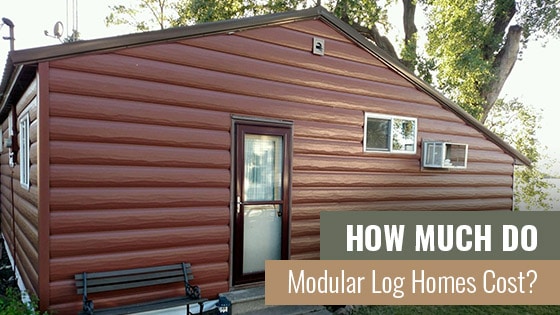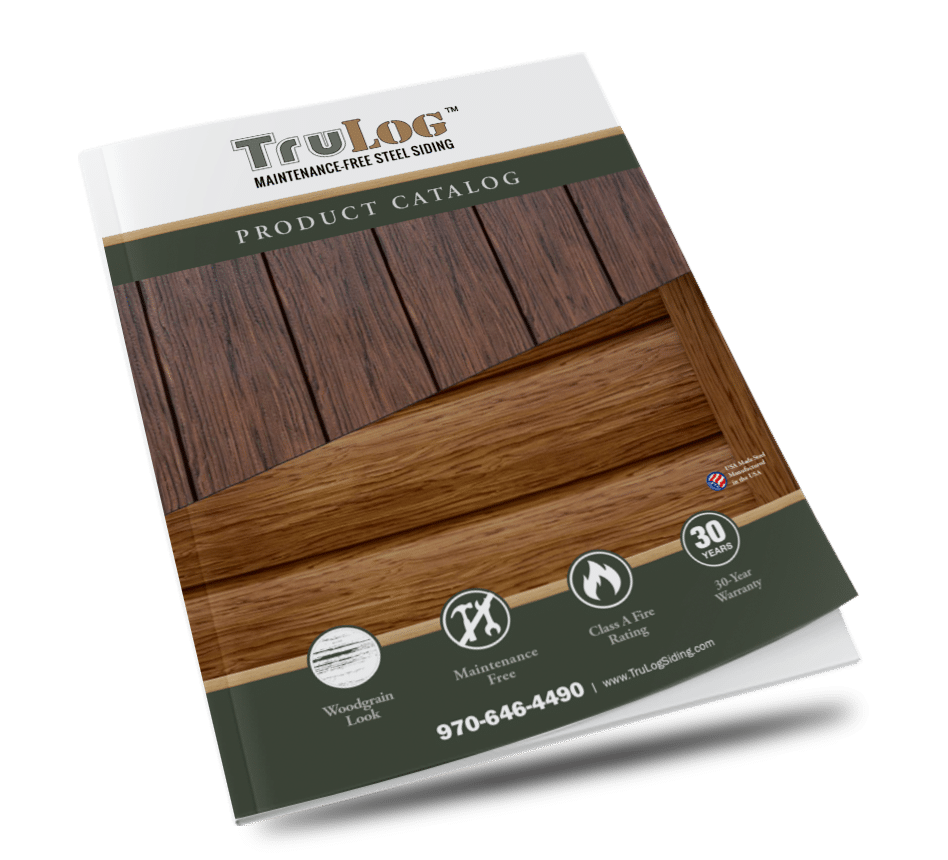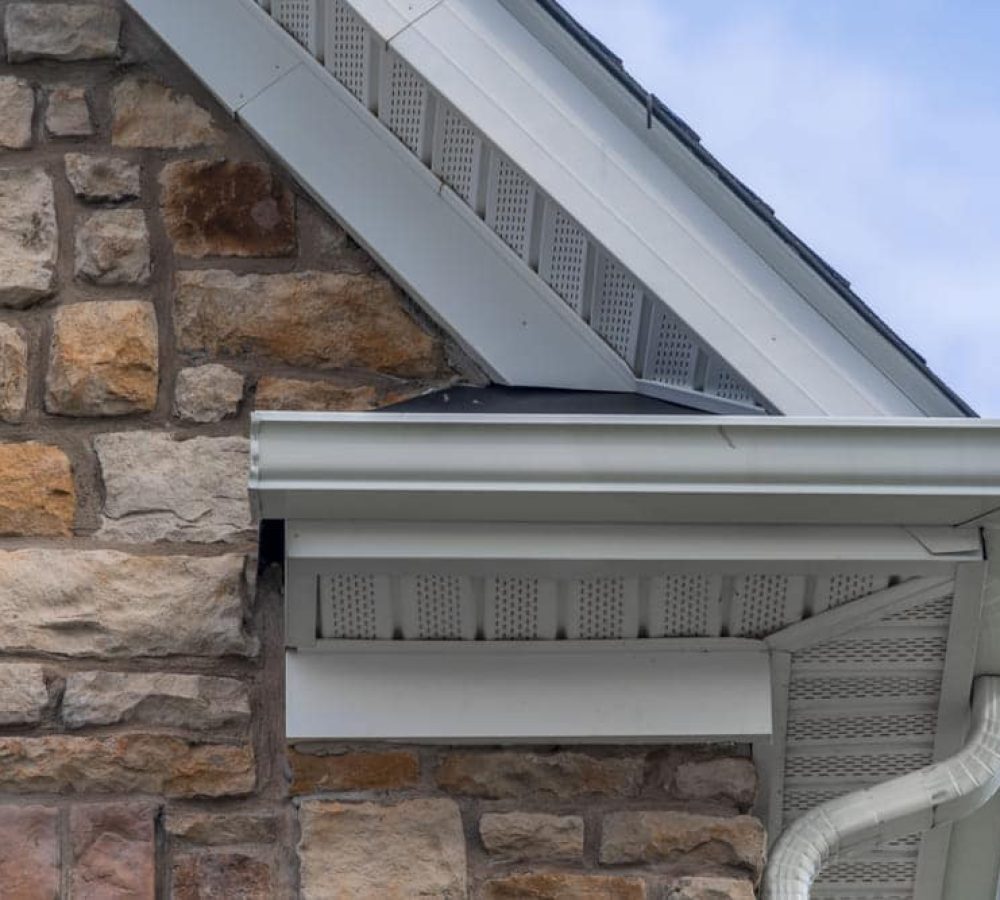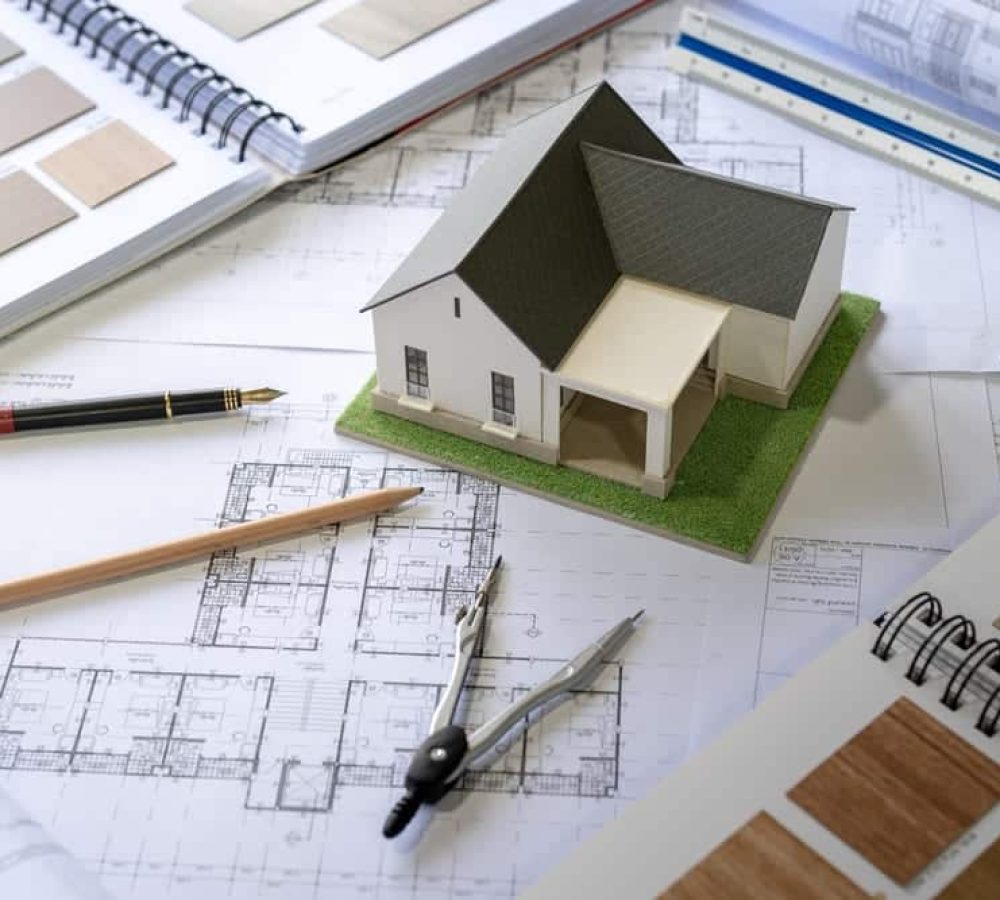The appeal of modular homes is easy to see. They’re built in advance under controlled factory conditions, so modular homes can eliminate a lot of the guesswork and surprise detours involved in the construction process. In addition, the cost savings involved in building a modular log home can also be an attractive benefit.

Determining the total cost of buying a modular log home depends on a number of factors, including the selected floor plan, materials, construction site conditions, and more. Some smart material swaps can also add to the overall value of a modular log home, proving more cost-effective in the long run.
This guide breaks down multiple factors involved in calculating the cost of purchasing a modular log home. Take a look!
The Cost of Modular Log Homes
Modular homes, also referred to as prefab homes, are structures that are built in a factory and then delivered to the property site. Just about every detail of these homes are prefabricated, thus the name ‘prefab’ homes. Though modular log cabins arrive at the property site fully built, they aren’t quite as generic as you may think. In reality, there are many different prefab floor plans to choose from, providing homeowners with several options.
There are various floor plan options available, so there isn’t typically a flat rate price for modular homes. The Modular Home Builders Association ascertains that there are, in fact, significant savings involved in constructing a modular log home. The association estimates a total cost savings of 3.4% with modular homes, or around $8,067 on a 2,000 square foot home. These savings are attributed to an overall increase in workplace productivity for modular homes and a reduction in waste generated during construction.

Even with these types of estimates, the final cost of building a modular log home can vary greatly. Transportation costs, foundation needs specific to the terrain, the complication of sewer lines, and other challenges faced by unique property conditions will all play a role in the total cost of establishing a modular log home.
Benefits of Going Modular
For many, the benefits of going modular are exceptional. After all, purchasing a modular log home can save a ton of time that would otherwise be spent revising floor plans, selecting materials, coordinating with different contractors, and trying to get all the details to fall in place cohesively.
Few people are capable of orchestrating all the details of building a home without making some sort of revision or re-do at one point. These little mistakes and adjustments can add up 一 financially and in the overall timeline. Quite simply put, time is money, and modular log homes save a lot of time!

Modular Log Homes Built for the Long Run
Homeowners should never dismiss the opportunity to enhance their prefab home with smart material swaps. There’s no question that certain materials are longer-lasting than others, and selecting reliable products from the start can save a lot of time and money in the long run. Cheaper materials will require more upkeep and routine repair, which can add to the overall cost of maintaining a property. Therefore, swapping these substandard products for more durable materials is a great idea for making a modular log home more cost-effective.
One of the wisest areas to enhance is the siding. Modular log homes that are built with natural timber are likely to require an extensive amount of upkeep and repair, because natural wood is more susceptible to moisture and sun damage, as well as wood-destroying organisms. A two-story home with wood siding is an estimated $3,000 – $5,000 for repainting and $2,000 – $4,000 for staining. These tasks are typically done every 2 to 5 years. Keep in mind that this does not address other forms of common wood damage, like rotting or insect infestation.
Swapping out authentic wood for a more durable siding product is an excellent way to cut long-term costs for your modular log home. TruLog makes maintenance-free steel siding that looks just like real wood, allowing you to get that idyllic, charming exterior of a log cabin without all the expensive upkeep needed to maintain the beauty of real wood. It may cost just a little more up front, however, wood-look steel siding is a great way to help protect your modular log home and save on repairs in the long run.

Extra Expenses to Consider
If you want to further customize the modular home, there may be added expenses involved. Additional rooms or architectural features that deviate from standard prefab design plans are likely to cost extra, as are particular property challenges, like rocky, unlevel terrain or properties located in remote areas. Always factor these extra expenses into the final calculations in order to have a more accurate estimate.
Build Your Modular Log Home the Smart Way
Modular log homes can save homeowners time and money. Smart building material swaps, like steel siding that resembles natural wood, can help you save even more by cutting down on future repair work. Always consider extra additions and customizations when calculating the total cost of your modular log home.
Contact Trulog Siding today for expert advice on how to approach your modular log home build.





